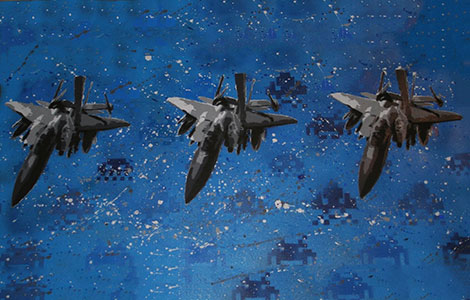
This article was written following the release of the Institute for Economics and Peace’s Global Peace Index 2017.
While the world has successfully lowered overall levels of militarisation over the last 30 years there has been a dangerous increase in the world’s most unstable areas
The conflict in Syria is a stark reminder of the devastating potential of state based armed conflict and the destructive capability of conventional heavy weapons. One need only look at the gulf between the numbers of lives lost from terrorism versus armed conflict globally to be reminded of this fact –in 2016, it is estimated that approximately five times more people were killed in armed conflict than in terrorist events.
While charting trends in militarisation is difficult due to the constantly evolving destructive capability of heavy weapons technology, IEP has tried to develop a data driven approach by compiled 30 years of heavy weapons data based on the authoritative International Institute for Strategic Studies (IISS) Military Balance. The data have then been codified based on a methodology developed by the Stockholm International Peace Research Institute (SIPRI).
These data show an important reduction in the global number of heavy weapons since the end of the Cold War – a positive trend for peace.
Much of this reduction in heavy weapons capacity and militarisation has been concentrated amongst the major powers and developed countries. This was due to significant average decreases in military expenditure amongst developed counties over the last 30 years. Five of the largest fallers in military spending over the period were NATO member countries, including two UN Security Council members – France and the United Kingdom. The significant peace dividend from the end of the Cold War meant average military spending for the richest countries in the world fell from 2.85 per cent of GDP in 1987 to 1.39 per cent in 2015.
The significant total reduction in global heavy weapons stores closely corresponded to the dissolution of the Soviet Union, technological changes during the 90s, as well as notable global reduction in the total number of armed service personnel. During this period, the armed forces personnel rate fell by 16 per cent from 1987 to 2014. While this reflects changing technology and capabilities of modern militaries, it now means there are 700,000 fewer people employed in the military today than in 1987.
However, these positive trends in militarisation have been countered by the shift of geopolitical and economic power to the developing world. The BRIC countries, China, India and Brazil all made large increases in military spending and improvements in military capability over the last ten years. Rapid economic growth has driven this trend as these economies have become significantly larger their defence budgets have also grown in outright terms. Military spending has in fact fallen as a percentage of GDP from 4.06 per cent in 1987 to 2.35 per cent in 2015 – reflecting their increased economic might.
The consequence of these geopolitical and economic changes is a greater diffusion of military capabilities and militarisation throughout the world, which does pose new risks, especially in a more multipolar world.
Patterns in military spending since 1989 tell the story of this diffusion and shift in military capability. While total global military spending increased in constant terms over the period by almost 13 per cent, two major shifts occurred. Firstly, the composition of spending amongst the top ten significantly changed with Germany, the U.K and France all declining spending by 32, 7.5 and 13 per cent respectively and China, Saudi Arabia and India all dramatically increasing spending by ten, four and three times respectively. Secondly, the spending outside the top ten increased by more than 50 per cent and is now 25 per cent of the total global share of military spending.
These shifts in spending have flowed into changing heavy weapons capability especially in several geopolitical hotspots. This is seen in the increasing heavy weapons scores of North and South Korea, India and Pakistan as well as Egypt and Saudi Arabia, the latter of which has become increasingly involved in conflict in the region.
Not withstanding this, the dangerous shifts in heavy weapons capability are also accompanied by the persistent nuclear threat. It should not be forgotten that while there are some 50,000 fewer nuclear weapons on the planet today than in 1987, it is estimated there are still 10,145 active nuclear weapons but now held by a greater number of actors including Pakistan, India and North Korea.
While significant positives can be taken from the overall reduction in militarisation at a global level, the risk equation is counterbalanced by a greater spread and diffusion of heavy weapons, and especially nuclear weapons capability specifically – in some of the most unstable hotspots in the world.
About the Author
Daniel Hyslop is the Research Director at the Institute for Economics and Peace (IEP).
For more information on issues and events that shape our world, please visit our CSS Security Watch Series or browse our Publications.

